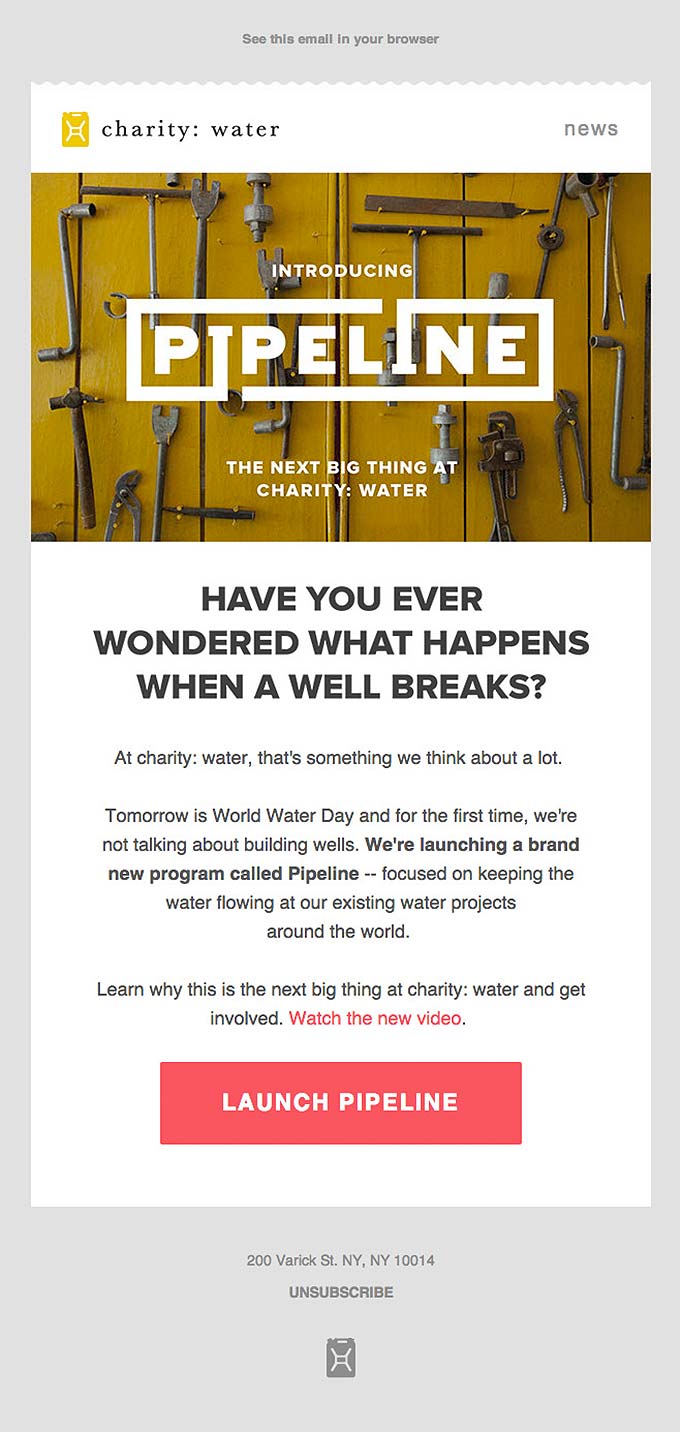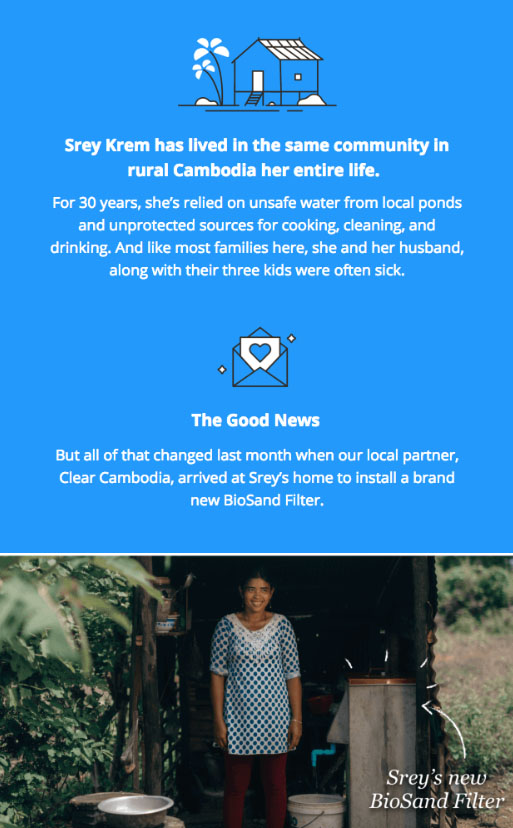How to Increase Your Fundraising Email Success Rate

Fundraising can be a difficult task, especially when there’s a deadline involved. The biggest challenges for many non-profits is timely fundraising and getting donors to donate funds multiple times. Fortunately, these challenges can be solved with a strong email list. You’ve probably heard the common saying, “the money is in the list.” Well, it’s not wrong but success depends on how you push your fundraising emails.
Why use email marketing for fundraising?
Email is a fast communication channel that can bring people together, making it exactly what nonprofits need in a digital era. Effective email marketing campaigns will help you spread your message and get the right people involved quicker.
There are several actions you can take today to start hitting your goals faster. Things like crafting a catchy and appropriate subject line, timing your email delivery, tactfully using images, etc. can help. Email can also be an enabler when you use the right email marketing software.
For example, SendinBlue, an email marketing platform, allows organizations to send out SMS (Short Message Service) text messages. That means every donor that has opted in to receive a text from the charity will receive your message near instantly. This is certainly a great feature for time-sensitive fundraising.
1. Subject line optimization
The subject line is the first thing anyone sees. Potential donors won’t read through your fundraising email if the subject line doesn’t grab their attention. Hence, a subject line that hooks the recipient is essential if you want your emails opened.
In fact, 47 percent of people will open your email and 69 percent will report it as spam based on the subject line. So your subject line is perhaps the first thing to consider before hitting send on an email campaign.
The best fundraising email subject lines have one or more of the following:
- A sense of urgency
- Piques curiosity
- Starts a story
A sense of urgency
Creating a sense of urgency can be tricky but some of the best fundraising email subject lines have them. Fundraisers can create urgency by setting a deadline and stressing the immediate need to solve an unpleasant situation.
Pique Your Audience’s Curiosity
“Curiosity killed the cat” but in this case, it’ll earn you attention, which leads to more donors. The following subject line from Charity: water is a great example. “Have you ever wondered what happens when a well breaks?” See original email below.

Starts a Story
This is similar to piquing someone’s curiosity. You can start a story with your fundraising email subject line. To do this well, the goal isn’t to tell a story, rather make the reader expect a story. For instance, a subject line like, “What we had to do,” entices the reader with the expectation of a story.
2. Apply personalization
Email personalization is using the personal information you have about contacts to personalize email messages. This can be info like name, place of work, causes they’ve donated to before, and so on.
Tailoring your emails to suit the recipient makes everything more personal. Your email will better resonate with recipients, which can increase donations. However, don’t overdo it with personalization, otherwise, you risk scaring some people or coming across as disingenuous.
Typically, using the person’s first name is enough personalization.
3. Time your email delivery
Email timing is a big portion of email marketing. Several industry studies suggest that the best times to send emails are in the morning for higher open rates. But, that may be a poor time for sending fundraising emails. According to several experts, midday might be better.
This makes sense considering that many of your donors probably work a 9-5. They’ll be more concerned with getting to work on time in the morning. Also, sending your email in the afternoon may mean you’re more likely to reach more subscribers. Here’s an example: Let’s assume you’re on US west coast time. Due to the time difference, sending an email in the afternoon means you’ll also reach people on the east coast after dinner or right around that.
4. Image usage
Proper use of images or visuals holds attention. This is because visuals are easy for people to interpret. They can help with conveying messages or getting a point across much easier. Furthermore, images are effective because many of us are visual learners.
For best results, use images of real people rather than cartoons, drawings, generic landscapes, etc. This will help your readers feel more relatable to the cause and it isn’t just true for fundraising emails. Other industries benefit from using images with people in them (e.g. Fashion).
Remember that you’re trying to convince people to become supporters and donors to your cause. So use images that help them understand why your charity is important. Go for images that can inspire others to become part of a greater cause. Don’t be afraid of pulling on their heartstrings either.
Other considerations for image usage
Although images are an important aspect of email marketing, you still have to keep them limited for two reasons: a) The average viewing time for an email is rather quick and b) some spam filters may mistake your content as malicious.
So use fewer images but enough to get your point across without being confusing or redundant. With regards to spam filters, make sure there’s more text than visual content and you should be all right.
5. Use a strong CTA
A CTA, or call-to-action, is what you want the viewer to do after reading your email. This is quite similar to having a good subject line, except, it’s found within the body of your fundraising email.
You don’t want to beat around the bush when it comes to CTAs. Effective CTAs are specific and authoritative. For example, something like “Join US” or “Help Us”, while it may be authoritative, isn’t specific. Similarly, a CTA like “Join the Cause,” isn’t specific enough.
More specific CTAs like the following would work better.
- “Join us in our fight to save the planet from global warming now.”
- “Help us reduce illiteracy in South Sudan today.”
- “Join the cause to fight cancer for as little as $5 per month.”
Your CTA should be part of the story and encouraging. The CTA in your email is often the final attempt at persuasion. Though you can have multiple CTAs in one email (e.g. one at mid-range and another at the bottom).
Charity email examples and examples of compelling fundraising letters
Here’re some real-world charity email examples to inspire you and they just happen to also make great examples of compelling fundraising letters.
The following email from Save The Children is a welcome message that sets the tone right out the gate. They extended their gratitude and highlighted the charity’s values. Plus told their subscribers what to look forward to in the future.

The next example is from WWF and they really pull at your heartstrings and included two great CTAs.

The following is a success story email from Charity: water. It’s certainly a great way of showing your donors that their funds are being put to good use.

BONUS: Consider these when building your email marketing campaigns
- Most people open emails because they trust the sender. So if you’re fundraising for a major organization with a reputable and trustworthy name, use it as the sender. Alternatively, you can use someone in your organization as the sender (e.g. Vice President) but keep it consistent throughout all your campaigns. People are more likely to open emails with a name they’re familiar with.
- Don’t forget about the preview text. This is the small preview shown beneath the subject line in many email clients and reveals the first few words. So make sure the first few texts of your email messages pulls the reader in, and avoid sending an all image/visual email message.
- Test your subject lines. You can run A/B test to see which subject lines work best. Preferably, you should send the test to a portion of your email list first. You may want to try Constant Contact for running A/B tests. The platform has a feature that lets you A/B test by sending two different subject lines to portions of your mailing list.
Start creating a compelling fundraising email
Email marketing will help you fundraise more efficiently. Always include a great subject line that captures attention, compelling copy, and send your email messages at optimal times. In addition, don’t forget to add some images and a strong CTA.
All aspects of your email must work together to promote or achieve the same goal, which is usually convincing people to donate. Lastly, regularly test new approaches that may improve your outcome.
This website is an informative comparison site that aims to offer its users find helpful information regarding the products and offers that will be suitable for their needs. We are able to maintain a free, high-quality service by receiving advertising fees from the brands and service providers we review on this website (though we may also review brands we are not engaged with). These advertising fees, combined with our criteria and methodology, such as the conversion rates, our team of reviewer's finding and subjective experience and product popularity, impact the placement and position of the brands within the comparison table. In the event rating or scoring are assigned by us, they are based on the position in the comparison table, or according to other formula in the event specifically detailed by us. See our How we Rate page and Terms of Use for information. The reviews, rating and scoring are provided “as-is” without guaranties or warranties regarding the information contained in our website, which shall not be considered as endorsement. We make the best efforts to keep the information up-to-date, however, an offer’s terms might change at any time. We do not compare or include all service providers, brands and offers available in the market.





